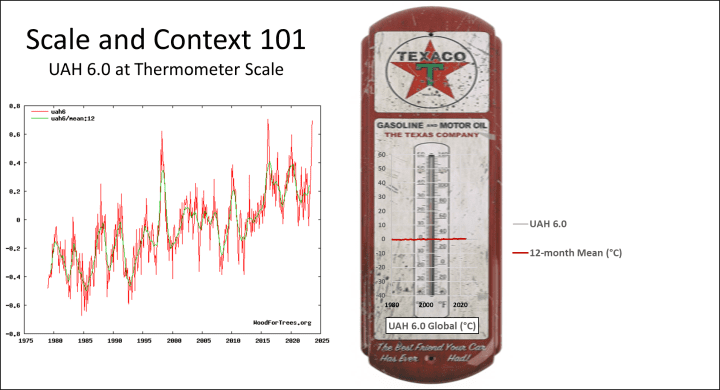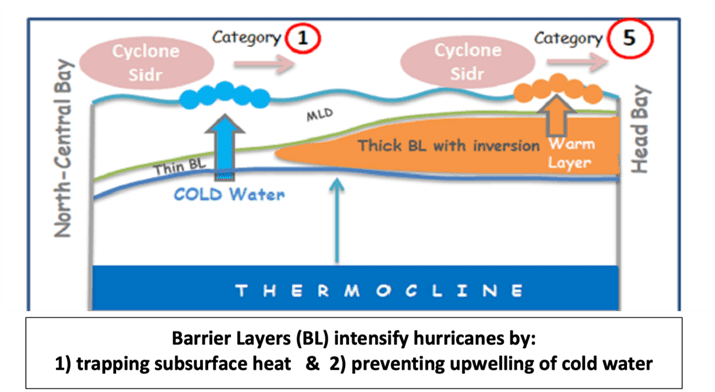by A. Préat, Oct 13, 2023 in Science,Climate,Energy
An obvious fact
No one denies that the Earth’s temperature has been rising slightly by around 0.9°C for almost 125 years (see Soon et al., 2023 for details). This recent increase is minimal (0.6°C between 1975 and 1998) and framed by periods of temperature decrease of similar amplitude (1880-1910 and 1940-1975).
Our media, including the IPCC and many scientists, claim that the sole culprit for the current temperature rise is atmospheric CO2 levels, which are linked to human activity. This is a hypothesis, since no link has yet been established between temperature and CO2 content – quite the contrary (Davison, 2023). The climate alarmism (Watts, 2023) that occupies the front pages of our newspapers is not justified, as we shall see.
Geological cycles
This increase over more than a century is by no means exceptional; it has occurred many times before with much greater amplitudes, up to 20 times the recent increase, and over equally short periods. For example, in the Pleistocene (2.58 million years or ‘Ma’ to 11,700 years), researchers have counted more than 25 cycles with abrupt increases of +8°C to +16°C in 50 years each time (= ‘Dansgaard-Oeschger cycles’, see Boers, 2018, SCE, 2020 and here). These abrupt increases are to be compared with the recent increase of 0.3°C in 50 years (average 1880-2008). See SCE and SCE. Such cycles also exist in older geological periods, for example in the Jurassic (CNRS ; Boulila et al., 2022).
Several high-level journals (including Nature) have shown that the increase in CO2 follows that of temperature, mainly because of CO2 degassing in the oceans (see references in SCE, 2021). Note also that the current atmospheric CO2 content (0.04% or 400 ppm – ‘parts per million’) is twice what it was during the Dansgaard-Oeschger cycles, which last between 1,500 and 4,500 years. It’s also worth noting that current atmospheric CO2 levels are the lowest since the Earth’s existence (4.65 billion years ago), apart from a short period of 100 Ma (in the Permian-Carboniferous transitional period) with the same levels as today. For almost 2% of its history, the level of CO2 in the Earth’s atmosphere has thus varied from several thousand ppm to several percent, i.e., from 3 to 25 times higher since the Cambrian, 541 Ma ago (geological scale here), when biodiversity exploded (with metazoans, here), and even much earlier during the Precambrian (Thomas, 2000 ; Préat, 2019 ; Lehmer et al., 2020). CO2 levels were sometimes higher than today’s during ice ages. Examples of warmer and colder periods are the rule in geology; just think of the Arctic (Svarlbad) at the beginning of the Holocene, around 11,000 years ago, which was +7°C warmer than the present, when CO2 levels were half the current level (Richard, 2020). Continuer la lecture de Origins of climate changes →







